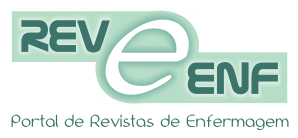<b>Avaliação do aleitamento materno de recém-nascidos prematuros no primeiro mês após a alta</b> - doi: 10.4025/cienccuidsaude.v11i1.18871
Palavras-chave:
Aleitamento Materno, Prematuro, Avaliação, Continuidade da Assistência ao Paciente.
Resumo
O bebê prematuro apresenta imaturidade na sincronia deglutição-sucção, obtida após 34 semanas de idade gestacional. É importante identificar as dificuldades vivenciadas pela díade mãe-filho no processo de aleitamento materno durante o período de hospitalização e após a alta da Unidade de Terapia Intensiva Neonatal (UTIN). Objetiva-se avaliar o aleitamento materno de recém-nascidos prematuros no primeiro mês após alta da UTIN. O estudo consiste de uma pesquisa exploratória e descritiva na modalidade estudo de caso. Os dados foram coletados por observação do aleitamento materno mediante instrumento apropriado, na amamentação na unidade, durante a hospitalização e após um mês da alta hospitalar, no ambulatório de seguimento de recém-nascidos de risco. As principais dificuldades enfrentadas pelas mães na hospitalização e após a alta foram dor ao amamentar, mamas túrgidas, mamilo plano e dificuldade em manter o bebê acordado. Em relação ao prematuro, as preocupações foram: o estado de alerta nas mamadas; um padrão adequado de sucção-deglutição; frequência respiratória sem coordenação nas mamadas; pega e postura do bebê. A preocupação com o aleitamento materno deve ir além do período de hospitalização, tendo continuidade após a alta hospitalar, visto que este é o período em que essa díade encontra maior dificuldade de adaptação e necessita de apoio para a manutenção da lactação e do aleitamento materno.Downloads
Não há dados estatísticos.
Publicado
2012-10-24
Como Citar
Gubert, J. K., Viera, C. S., Oliveira, B. R. G. de, Delatore, S., & Sanches, M. de M. (2012). <b>Avaliação do aleitamento materno de recém-nascidos prematuros no primeiro mês após a alta</b> - doi: 10.4025/cienccuidsaude.v11i1.18871. Ciência, Cuidado E Saúde, 11(1), 146-155. https://doi.org/10.4025/ciencuidsaude.v11i1.18871
Edição
Seção
Artigos originais



















